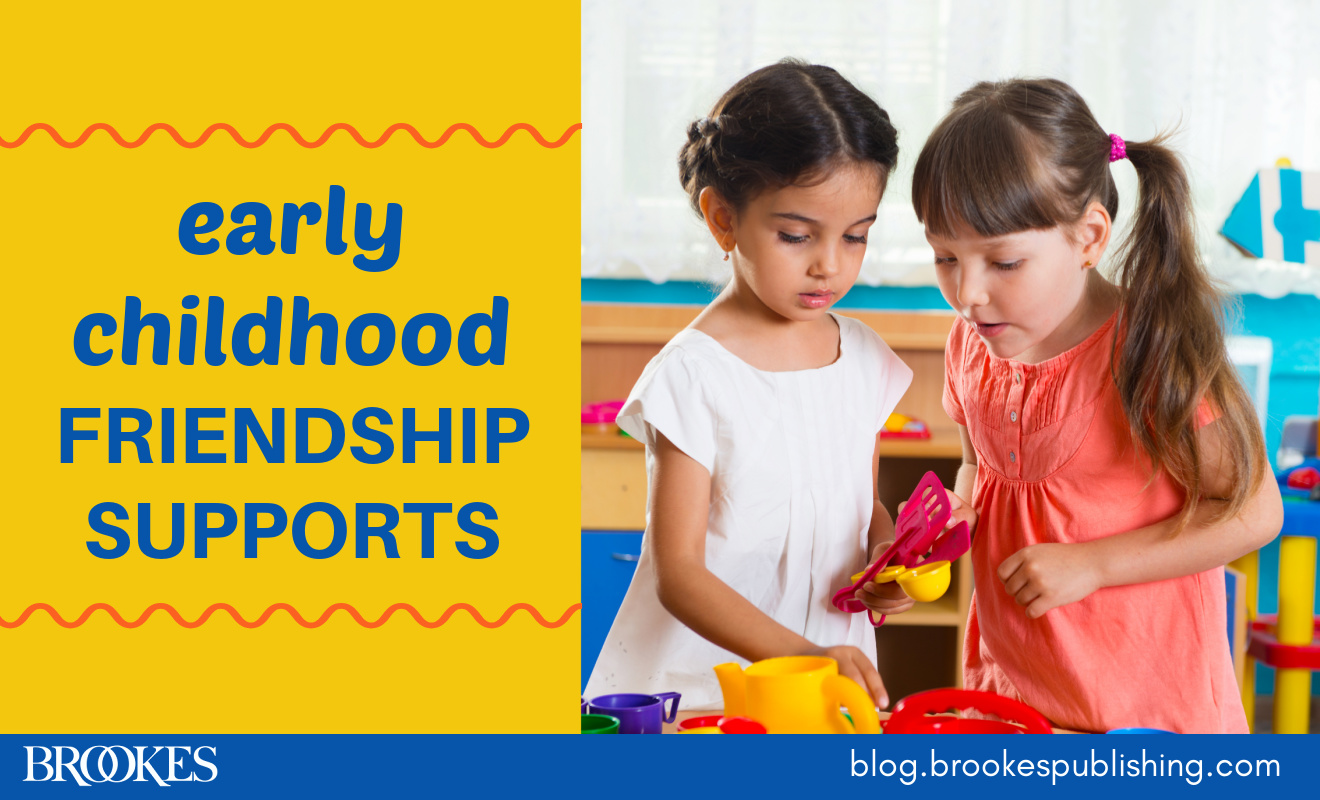We post a lot about how to help young children develop the critical social-emotional skills they need to succeed. Today we’re turning our spotlight on two specific skills— sharing and turn-taking—that play a vital role in helping kids develop friendships and positive peer connections.
Excerpted and adapted from the book Early Intervention Every Day by Merle J. Crawford and Barbara Weber, these tips will help you proactively teach these important skills to young children. Keep these guidelines handy if you’re a parent—and if you’re an early childhood educator, you can adapt these tips for the classroom and share them with the families you work with.
Establish the family rules. Make rules for sharing that reflect the family values. For example, some families allow particular toys to be one child’s possessions and do not allow the sibling to play with them without permission, and other families have sharing as a rule across possessions.
Build skills gradually. Young children often find it easier to share with adults. To help teach turn-taking and sharing, it’s helpful to start with an adult who gets a very short turn compared with the child’s longer turn. Next, allow the turns to become equal in length, and then try transitioning to turns between two children.
Keep turns short. At first, keep turns very short and limit the number of turns. This will make it easier for young children to get into the rhythm of turn-taking. To facilitate the turns between the kids, count to 10 for each turn—this helps both children anticipate how long they’ll have to wait before the exchange occurs.
Model sharing during snack time. Demonstrate the sharing of snacks with a sibling or peer by sharing items one at time, back and forth, across the children at the table. Saying “one for you, one for you, one for you” will call attention to the equality of the distribution. Waiting as the snack is provided and watching equal allotment sets the stage for regulation during a group activity at school that requires waiting and taking turns.
Introduce “waiting hands.” To help a child learn to wait, have them clasp their hands together and say “waiting hands.” Using a prompt like “Show me waiting hands!” gives the child a specific behavior to focus on while waiting.
Add helpful gestures. Embed communication skills within turn-taking by adding gestural indicators. For example, try tapping your chest and saying “my turn” and then helping the child tap their own chest to indicate “my turn” when appropriate.
Teach some diversion methods. When the child has to wait for a turn, a small diversion—such as holding a toy, singing a song, or counting—may help ease the waiting process. You can reinforce early academic skills at the same time by having the child sing the ABC song or practice counting to 10.
Use timers and other audio cues. Setting a timer for 1–2 minutes may be helpful: when the timer goes off, the other child gets a turn with the item. Giving the child a quick verbal cue, such as “One more minute, then it’s Suzan’s turn,” may also help with transitions.
Lay the groundwork during playtime. As you play with children, look for opportunities to provide structure for turn-taking and sharing. When in the yard or driveway, play simple back-and-forth games such as throwing a ball or pushing toys to each other.
Figure out the rules around new toys and gifts. Holidays and birthdays that involve new gifts can be especially challenging times for sharing. Having guidelines about sharing may facilitate the process. For example, you might establish a 24-hour “new toy rule” that allows the child to play with the new toy without sharing for one day. Asking other families how they handle these delicate issues may help you collect other solutions, too.
Put the most special toys away. Before a play date, you might want to limit the potential for conflict by involving the child in a plan for isolating very special toys that would be difficult to share. Put the highly desired toys away during a play date.
Try a trade. Trading toys may ease the difficulty of sharing. Ask children to swap toys to practice sharing skills, instead of asking a child to simply give their toy to someone else.
Work turn-taking into storytime. Reading to the child and a friend or sibling provides a cooperative opportunity for taking turns, responding, and establishing the same activity for shared attention. Waiting for their friend or sibling to respond will help a child learn to take turns. If the book has flaps to lift, the children can take turns lifting the flaps. You can also give each child a chance to pick out a book to read.
Don’t give in to tantrums. If a child has a tantrum while waiting or while being asked to share, be sure that the child doesn’t get what they want while screaming; giving in will demonstrate that tantrums have beneficial results.
Sharing and turn-taking are skills children will need for the rest of their lives. Start teaching these skills early with these 14 tips—and for many, many more ways to support young children’s development in key areas, get the book behind today’s blog post!

Early Intervention Every Day!
Embedding Activities in Daily Routines for Young Children and Their Families
By Merle J. Crawford, M.S., OTR/L, BCBA, & Barbara Weber, M.S., CCC-SLP, BCBA
Effective early intervention doesn’t stop when the provider leaves the family’s home. That’s why every interventionist needs this practical sourcebook, packed with research-based strategies for helping parents and caregivers take a consistent, active role in supporting young children’s development. Targeting 80 skills in 6 key developmental domains for children birth to three, this reader-friendly guide gives professionals dozens of ready-to-use ideas for helping families and caregivers embed learning opportunities in their everyday routines.
Stay up to date on the latest posts, news, strategies, and more!
Sign up for one of our FREE newslettersMore posts like this

14 Great Friendship Supports for Early Childhood Classrooms
January 27, 2022
11 Simple Things You Can Do To Support Young Children’s Social-Emotional Skills
October 27, 2020


Write a Comment
Your email address will not be published. Required fields are marked *
Post a Comment